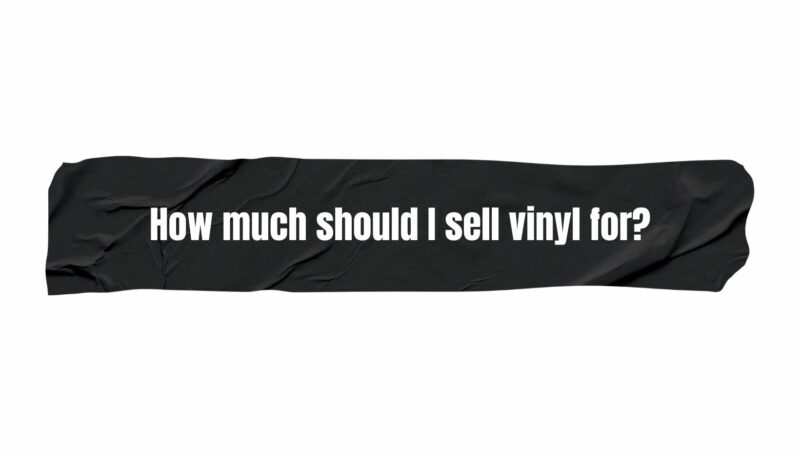Vinyl records, once a hallmark of music consumption in the past, have experienced a remarkable resurgence in popularity. This resurgence has created a vibrant market for both collectors and sellers alike. If you find yourself holding a collection of vinyl records that you’re considering selling, the question of how to determine the right price can be a complex one. In this article, we’ll delve into the key factors that influence the pricing of vinyl records, providing you with insights to help you confidently set fair and competitive prices for your collection.
Understanding the Market Dynamics
- Research the Market
Before embarking on pricing your vinyl records, it’s essential to research the current market trends. Browse online marketplaces, such as eBay, Discogs, and specialized vinyl communities, to get a sense of the prices that similar records are fetching. This research will give you an overview of the range of prices for different genres, artists, and conditions.
- Evaluate the Condition
The condition of a vinyl record plays a pivotal role in determining its value. Records in excellent condition, with minimal to no scratches, scuffs, or warping, are likely to command higher prices. Gradations like “mint,” “near mint,” “very good,” and so on describe the condition of the vinyl and its cover. Be honest in your assessment to ensure that buyers know exactly what they are getting.
- Consider Rarity and Demand
Rarity and demand are influential factors in pricing vinyl records. If you possess a record that is rare due to limited production, unique pressings, or special editions, it can significantly impact its value. Additionally, records from genres or artists that are currently in high demand may fetch higher prices due to market dynamics.
- Account for Artist and Historical Significance
The reputation and historical significance of the artist or band behind the record can affect its price. Iconic artists or albums that have left a lasting impact on music history might be more valuable to collectors. Similarly, albums that marked pivotal moments in cultural history or influenced the course of a particular genre could carry a higher price tag.
- Original Pressings vs. Reissues
When pricing your vinyl records, it’s crucial to differentiate between original pressings and reissued versions. Original pressings, especially those from the time of the album’s initial release, tend to be more valuable due to their historical significance and authenticity. Reissues, while still valuable, might not command the same premium as their original counterparts.
- Assess Packaging and Extras
The condition of the packaging, including album covers, inserts, and any additional extras, can influence the overall value of a vinyl record. Records with well-preserved packaging, limited-edition artwork, and bonus materials such as posters or lyric sheets can make a record more appealing to buyers and justify a higher price.
- Check for Market Trends
The vinyl market can be influenced by trends and fads. Keep an eye on which genres or artists are experiencing increased demand or a surge in popularity. This information can help you adjust your pricing strategy to align with current market trends.
Pricing Strategies
- Competitive Pricing
Setting your vinyl record prices in line with current market trends and comparable listings is a competitive strategy. This approach can attract potential buyers who are actively searching for records at a certain price range.
- Incremental Pricing
If you have a collection with a wide range of values, consider grouping records into tiers based on rarity, demand, and condition. This allows you to create pricing categories that cater to different types of buyers.
- Negotiation Room
Leaving a bit of room for negotiation can be a smart strategy, especially if you’re open to offers from potential buyers. Just be mindful not to set the initial price too high, as it might discourage potential buyers from engaging.
- Promotions and Bundles
Offering promotional deals or bundling records together can entice buyers to purchase more than one record. This strategy can work well if you have records that complement each other in terms of genre or artist.
Conclusion
Selling vinyl records involves a mix of research, evaluation, and strategic thinking. The right pricing strategy considers factors such as condition, rarity, demand, artist reputation, packaging, and market trends. By thoroughly researching the market, honestly assessing your collection, and using competitive pricing strategies, you can confidently set prices that attract buyers while ensuring that your vinyl records find new homes and continue to be cherished for their analog charm.

